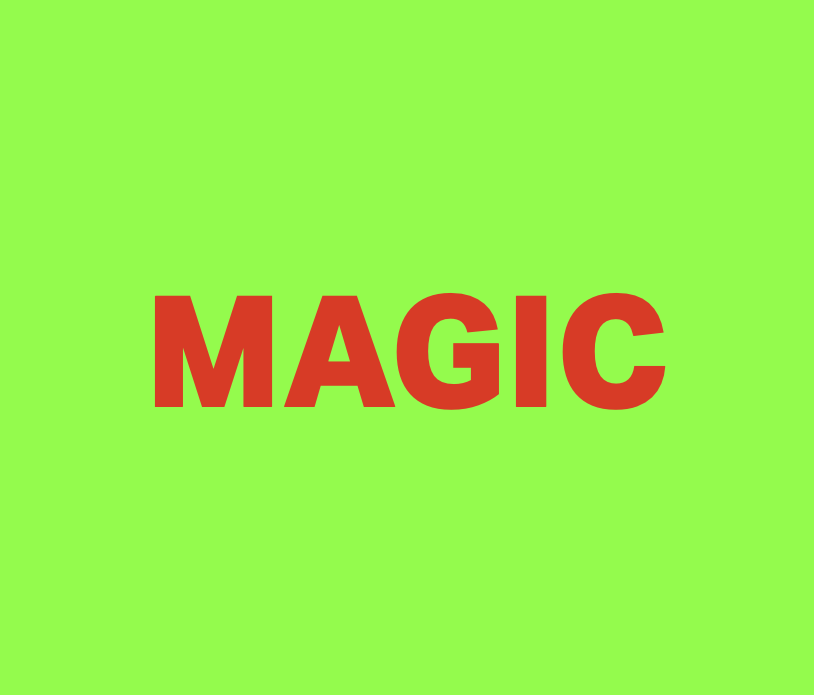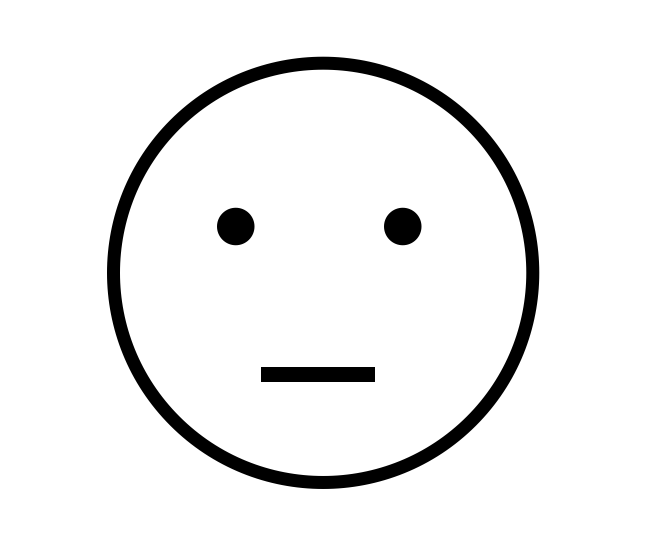Athanasius Kircher began experimenting with magic lantern slides and projections in Rome during the 1640s. Magic lantern shows combined the magic of theatre and legend with the illusionary quality of the projections themselves. How has animation maintained this connection with the idea of ‘illusion’?
The ‘illusion’ of animation is created by persistence of vision. This visual phenomenon occurs when someone looks at an image and then looks away, an afterimage remains briefly on the person’s retina. To demonstrate this, look at the word below for at least 5 seconds and then look at white background, you will continue to see the word even though it is ‘not really there’.

The discovery of persistence of vision led to the idea of viewing a series of static images in quick succession. This creates the appearance of movement as the missing visual information between each image is ‘filled in’ by the brain due to these moving faster than can be processed by the human eye. A simple example of how this works can be seen using a flipbook. A flipbook is a small book made up of several pages, each with a slightly altered version of a drawing on it. When the pages are ‘flipped’ the sequence of images appears to show movement.
The standard frame rate for present day animation is generally considered to be 24 frames per second (FPS). Animators usually produce 12 separate images per second, so each one is shown for 2 frames. When faster movement within the animation is required, 24 separate drawings are used, one for each frame, resulting in 24 individual frames per second. An exception to this standard would be stop motion animation. Due to the volume of work involved and time required to produce each shot for stop motion, the frame rate is usually between 6-12 fps. Creating 24 fps would require 1440 images for just one minute of animation!
3D animation usually employs 24 unique images per second as this results in a smoother animation. It is interesting to note that 3D computer generated animation is also rendered as a series of static images when exported.
Personification and anthropomorphism are also important factors to consider in relation to the illusion of animation. These are the attribution of human characteristics to inanimate objects/thoughts and animals, respectively.
Another consideration to take into account is pareidolia, the inclination of humans to impose meaningful interpretations that are non-existent onto visual stimuli. An example of this would be looking at a three pin plug socket and ‘seeing’ a human face.
This can also be shown using the simple image below, which is just a circle with two smaller circles and a line, but instantly becomes defined as a face when looked at.

The use of these three factors in animation allows a connection to form between an audience and the characters, whatever they may be, and thus there are seemingly limitless creative possibilities on offer for animation.
In 1981, two long-term Disney animators, Frank Thomas and Ollie Johnston, defined 12 principles of animation required to produce high quality, believable animation and they are still applied today.
Many of these are based on real-world physics, such as Squash and Stretch, which gives weight and/or flexibility to an object. These add a strong sense of believability to the animation. Others focus on more abstract concepts such as Appeal, e.g. designing characters that viewers can connect with on an emotional level, whether they are ‘good’ or ‘bad’.
Once these ‘rules’ have been understood and applied, it is then possible to see how far they can be pushed through experimentation, until the desired effect has been achieved. It is possible, however to go ‘too far’ into abstract or stylised realms, which could potentially create animations that the audience will feel disconnected from (and not understand what is taking place), although this could, of course, be the intention.
On the other hand, it is generally considered better practice to incorporate at least some exaggeration and stylisation into animation so it does not seem ‘too real’ and uninteresting.
In summary, the occurrence of persistence of vision is the key element when considering the ‘illusion’ of animation. Many of the earliest animated shorts, such as Disney’s Steamboat Willie (1928) may have been mainly about showcasing the skills of animators and astonishing viewers with the novelty of moving drawings, but this soon progressed into animations built from richly developed stories and characters that audiences can emotionally connect with and relate to.
Even in today’s technologically advanced era of computer generated animation, it is generally those with the strongest storylines, such as many of the Pixar offerings, that prove to be most popular.
I believe that stop motion animations, such as Laika’s Coraline (2009) and Aardman’s Shaun the Sheep Movie (2015), are the perfect example of the ‘illusion’ of animation. When considered logically, it is obvious that the characters are made of modelling clay or are puppets, and cannot possibly be moving, but as soon as we begin watching the animations, our minds are ‘tricked’ and all logic and disbelief goes out of the window.
Bibliography
Adobe (n.d.) A beginner’s guide to animation: types, techniques and tutorials. Available at: https://www.adobe.com/uk/creativecloud/animation/discover/animation.html (Accessed 21 June 2023).
Adobe (n.d.) Persistence of Vision (POV) Guide. Available at: https://www.adobe.com/uk/creativecloud/animation/discover/persistence-of-vision.html (Accessed 21 June 2023).
Adobe (n.d.) Understanding the 12 principles of animation. Available at: https://www.adobe.com/uk/creativecloud/animation/discover/principles-of-animation.html (Accessed 21 June 2023).
Blender (2017) The Principles of Animation. Available at: https://www.youtube.com/watch?v=wtJeoPAGbfY (Accessed 21 June 2023).
Blender (2018) The Illusion on Animation. Available at: https://www.youtube.com/watch?v=KyEcMEqeKpo (Accessed 21 June 2023).
Griffith, M.A. (2018) Line and the illusion of Life. Available at: https://blogs.umass.edu/arthist391a-kurczynski-2/2018/05/03/line-and-the-illusion-of-life/ (Accessed 21 June 2023).
Masterclass (2021) A Guide to the History of Animation. Available at: https://www.masterclass.com/articles/a-guide-to-the-history-of-animation (Accessed 21 June 2023).
Wikipedia (n.d.) Afterimage. Available at: https://en.wikipedia.org/wiki/Afterimage (Accessed 21 June 2023).
Wikipedia (n.d.) Coraline (film). Available at: https://en.wikipedia.org/wiki/Coraline_(film) (Accessed 21 June 2023).
Wikipedia (n.d.) Pareidolia. Available at: https://en.wikipedia.org/wiki/Pareidolia (Accessed 21 June 2023).
Wikipedia (n.d.) Shaun the Sheep Movie. Available at: https://en.wikipedia.org/wiki/Shaun_the_Sheep_Movie (Accessed 21 June 2023).